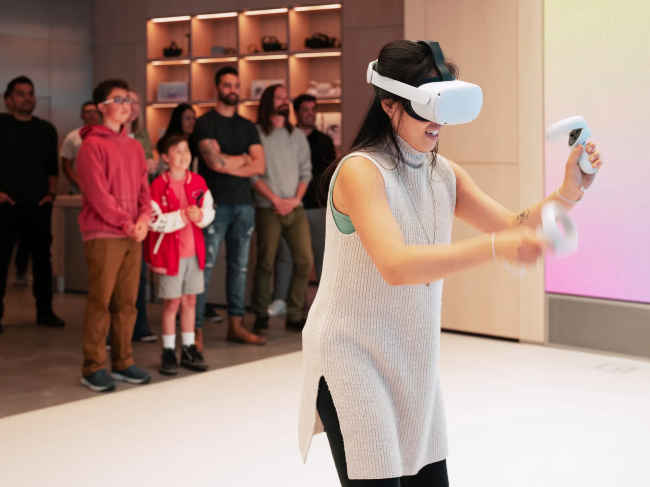[ad_1]
Mark Zuckerberg is so bullish on Metaverse that he rebranded Facebook to Meta and as per an ex-Meta employee, Metaverse is the “only thing” he likes to talk about these days. In this quest, he has been known to be spending big on either buying mixed reality companies or cooking up hardware solutions for the future he envisions. Well, to be more accurate, the engineers at Meta’s Reality Labs division are reportedly working on four Virtual Reality (VR) and four Augmented Reality (AR) products. Not only that, but the company is apparently also planning two wearables, one of which relies on mind-reading technology.
Meta VR Headsets headlined by Project Cambria: Details

Quest 2 | Source: Meta
According to a recent report by The Information, later this year, possibly in September, we may witness the debut of the Project Cambria headset. It will be a VR headset with the code name Arcata and priced around $799 (~₹61,091). It would have a spec-bump over the current Quest 2. This could include a high-res display with full-colour passthrough, Meta’s software based on Android, hardware like a “Chromebook for the face”, a big battery, and sensors for reading eye and facial movements.
This will be followed by VR headsets codenamed Stinson in 2023, Funston in 2024, and Cardiff also in 2024.
Meta AR Headsets led by Project Nazare: Details

Mark Zuckerberg fencing against a hologram during a Meta presentation. | Source: Meta
According to The Verge, the Project Nazare AR headset could come in 2024 and it will work independently without a mobile phone. Instead, it will be depending on a “phone-shaped device” for processing power. There will also be a “differential electromyography” wristband that will communicate over electrical pulses in our brain to control the AR activities on the screen. This mind-reading tech is acquired from CTRL-Labs, an upstart that Meta bought in 2019.
The interface will be Android-based and offer 3D holographic visuals for a “full” AR experience. The Nazare headset will come with a relatively wider field of view, an outward-facing camera, eye-tracking, stereo sound, and a “socially acceptable” form factor.
The social media giant is also said to launch a lower-specced AR wearable called Hypernova in 2024 itself, a “lighter, more advanced” AR device in 2026, and another iteration two years later in 2028. Somewhere in between, the second iteration of Meta-Ray-ban smart glasses also may hit the shelves.
However, those things still have some time to see the daylight. It is Project Cambria that is much closer in comparison. In 2022, we may also get to see a Meta smartwatch with a detachable display and cameras.
So, that’s a lot of devices and from the look of it, it is evident that Mark wants to capitalize on the prospects of Metaverse. It will be an uphill task and whether he will be able to do it successfully is something only the future can tell.
As for other news, reviews, feature stories, buying guides and everything else tech-related, keep reading Digit.in.
[ad_2]
Source link
